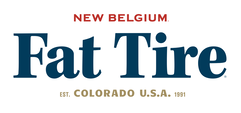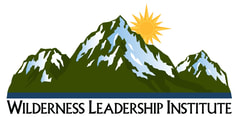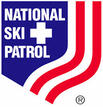Snowpack Summary February 12, 2022
Posted by Allen Giernet @ 7:45am (this summary expires in 24 hours)
This summary applies to backcountry areas only.
The Bottom Line –
Unusually warm temperatures continue and so should your concerns for wet loose snow instability. As temperatures rise and where solar input effects the snowpack be aware of roller balls and snow softening rapidly. If you find yourself sinking to your ankles move into shady terrain or lower angle slopes. Variable snow surfaces will be likely along with fast firm conditions in the morning and sheltered areas. Thin coverage will be increasing at lower elevations.
If you venture out please submit your observations to the avalanche center Submit Reports page.
Posted by Allen Giernet @ 7:45am (this summary expires in 24 hours)
This summary applies to backcountry areas only.
The Bottom Line –
Unusually warm temperatures continue and so should your concerns for wet loose snow instability. As temperatures rise and where solar input effects the snowpack be aware of roller balls and snow softening rapidly. If you find yourself sinking to your ankles move into shady terrain or lower angle slopes. Variable snow surfaces will be likely along with fast firm conditions in the morning and sheltered areas. Thin coverage will be increasing at lower elevations.
If you venture out please submit your observations to the avalanche center Submit Reports page.
Problem #1

Loose Wet avalanches are the release of wet unconsolidated snow or slush. These avalanches typically occur within layers of wet snow near the surface of the snowpack, but they may quickly gouge into lower snowpack layers. Like Loose Dry Avalanches, they start at a point and entrain snow as they move downhill, forming a fan-shaped avalanche. Other names for loose-wet avalanches include point-release avalanches or sluffs. Loose Wet avalanches can trigger slab avalanches that break into deeper snow layers.
General Summary
Continued overnight above freezing temps and very warm afternoon highs will keep the possibility of loose wet avalanches on our problem list for today. Be aware of changing snow conditions as the day warms especially where sun hits the slopes. Roller balls and sinking into the snow to your ankles are signs its time to move to lower angle terrain and seek sheltered shaded aspects to avoid wet snow instability. Fast firm conditions will still be possible in the morning and in sheltered locations where solar input does not have significant effect on the snowpack. Be mindful of changes as you travel and change aspect and elevation. A few degrees change in aspect or slope angle can make for changes in the surface conditions. Variable conditions will be prominent throughout the ranges. Southerly aspects and lower elevations will see receding to disappearing snow coverage. Be aware of your surroundings and what is below you to prevent putting yourself into an exposed situation if a slip and fall or loose wet avalanche takes you down the slope.
Exercise caution on slopes over 30° as these conditions will exist throughout all mountain ranges. Always exercise caution when entering into winter mountain areas. Bring a Beacon Shovel and Probe and know how to use them. Travel with a partner and make conservative decisions.
Continued overnight above freezing temps and very warm afternoon highs will keep the possibility of loose wet avalanches on our problem list for today. Be aware of changing snow conditions as the day warms especially where sun hits the slopes. Roller balls and sinking into the snow to your ankles are signs its time to move to lower angle terrain and seek sheltered shaded aspects to avoid wet snow instability. Fast firm conditions will still be possible in the morning and in sheltered locations where solar input does not have significant effect on the snowpack. Be mindful of changes as you travel and change aspect and elevation. A few degrees change in aspect or slope angle can make for changes in the surface conditions. Variable conditions will be prominent throughout the ranges. Southerly aspects and lower elevations will see receding to disappearing snow coverage. Be aware of your surroundings and what is below you to prevent putting yourself into an exposed situation if a slip and fall or loose wet avalanche takes you down the slope.
Exercise caution on slopes over 30° as these conditions will exist throughout all mountain ranges. Always exercise caution when entering into winter mountain areas. Bring a Beacon Shovel and Probe and know how to use them. Travel with a partner and make conservative decisions.
General Mountain Weather Forecast |
2-12-22
Saturday - Minor cooling with clear skies and moderate to strong Northwest winds through the morning diminishing this afternoon to Southerly and light. - There is a Wind Advisory in effect today until 1:00pm
Sunday - Slightly cooler then past few days but well above average temperatures again with sunny skies and light South to West winds.
Monday - Colder by a couple of degrees with clear skies and light winds. Clouds will develop in the evening.
Much cooler temperatures for Tuesday with moderate to strong winds, cloudy skies and a chance of snow. Cooler temperatures will continue through the week with minor warming each day. moderate to strong winds will continue through Thursday.
Saturday - Minor cooling with clear skies and moderate to strong Northwest winds through the morning diminishing this afternoon to Southerly and light. - There is a Wind Advisory in effect today until 1:00pm
Sunday - Slightly cooler then past few days but well above average temperatures again with sunny skies and light South to West winds.
Monday - Colder by a couple of degrees with clear skies and light winds. Clouds will develop in the evening.
Much cooler temperatures for Tuesday with moderate to strong winds, cloudy skies and a chance of snow. Cooler temperatures will continue through the week with minor warming each day. moderate to strong winds will continue through Thursday.
Click here for this Season's Snow Pack Summaries
To better understand the challenges and potential variability over the large area we are producing information for please read our Snowpack Summary - Format and Limitations
Disclaimer:
This Bulletin is designed to generally describe conditions where local variations always occur. Travelers are advised to exercise caution and make slope specific evaluations. As always, please treat this bulletin with appropriately guarded skepticism and make your own assessments. Help to provide more information to the community by reporting your observations
This Bulletin is designed to generally describe conditions where local variations always occur. Travelers are advised to exercise caution and make slope specific evaluations. As always, please treat this bulletin with appropriately guarded skepticism and make your own assessments. Help to provide more information to the community by reporting your observations
Click on the links below for the latest information
Latest Observtions
Click on the observation to go to the full report
|
Observation type
Snowpack Location - Mt. Pinos Summit area Date (yyyymmdd) - 20220206 Comment - Mt. Pinos was a gruelling lesson in snow development for this unusual winter. Despite 50-degree temps and sunshine, it was mostly rough, frozen crust, including a variation of suncups sliced into long, disagreeable shards by the slanting sun. That's what greeted us on the southwest apron of the mountain which had afforded pleasurable corn skiing two weeks ago. I figure the snowpack hasn't compacted enough to keep surface corn. We found interesting, if challenging, skiing on the northwest apron, and, surprisingly, in the steep forest dropping off to the north by the microwave tower. Tight turns in steep, narrow channels between trees are typical of Pinos, and the snow, though crusty, was even and turnable. "Backcountry skiers have more words for 'snow' than the Inuit, but they're all swear words." |
Observation type
Snowpack - Field Obs Location - Kratka Ridge area Date (yyyymmdd) - 20220206 Comment 1:30 pm Winds were moderate to gusty. At the road there was icy slick surfaces right by the car. The hike up the hill was slick and firm. Boot packed area was water ice and some of the trail was melted out to ground. Huge sun caps at the base were mostly firm with some softening even though they were in direct sun. There was a firm crust for most of the skin uphill occasionally on aspects east of North slight surface softening was noted. Surface melt freeze crust varied from 2.5cm to 6cm was mostly supportable on skis but breakable on foot. Just below crust was 25 cm of sugary rounding facets. There were several melt freeze crusts in the profile with a 12cm block of ice at the bottom. Due to the winds surface temp was kept below freezing even in the sun at this low elevation. There was little to no surface softening noted on the descent. Snow was edgeable in areas but firm and icy on most of the descent and exiting into firm sun cups and trampled snow made for some tooth rattling riding at the bottom. Winds increased during the afternoon and by 3:00pm temperatures felt much colder. At 3:40 and 6,788’ AT was 7.4c. Wind chill was keeping snow below freezing. Surface temp was -0.2°C. There was no sign of moisture in snow even at these lower elevations at this time. In this area we did not observe any signs of instability or wet slides, recent or from the past several days. |
Observation type
Snowpack Location - Mt Pinos Summit area Date (yyyymmdd) - 20220201 Comment - The good news is that the snow cover hasn't diminished on Mt. Pinos, but the bad news on Tuesday was a lenticular cloud parked over the summit ridge all day, which kept things crusty everywhere--none of the nice corn and skiable crud of the week before. I tried to find a feature called The Elevator Shaft, a short chute in the forest to the north of the main summit trail. I skied it once several years ago and I hoped for some residual powder, but I couldn't find either The Shaft or any residual powder. Best hope on Pinos is for corn. Sunny days ahead should provide that. Temps ranged from 30 to 50 over a long day tour. Coverage was skiable down to the Pinos-Sawmill saddle, if you like obstacles, which I always find interesting. |
Observation type -
Snowpack Location - San G Upper North Chutes Date (yyyymmdd) - 20220130 Comment - North Chutes up San Gorgonio were fairly consolidated. There was 1 to 2" of new snow above 8500' from the surprise upper level snow storm, 1/29/22. On the upper slopes (above 11,200'), the north wind blew the new snow away already. Final 300 to 400' of the chutes are icy, down to the base layer from the week-long North wind event. Some crowns/ broken cornices/Slab breaks along the entire upper northface of San G. Climbable and skiable with caution on the upper slopes of the north chutes. |
General Caution
You should always use safe terrain management and carry avalanche rescue equipment in the backcountry. Most avalanches are triggered by someone in the party or the victim. Practice with your rescue gear often and be prepared should the worst happen. Though we do not have an avalanche forecast center in this area as of yet, the information posted and shared here as well as the resources available on this site will help to make informed decisions for your backcountry travels. Use avalanche forecasts in your travels wherever available and be aware that avalanche ratings are general information. Elevation, location, geographic variability’s, slope aspect and angle all have effects on the particular area you travel in. This is only one piece of the information you should use in your decision making process. There is no substitute for avalanche education, for more resources and information as well as education please refer to our resources page.
You should always use safe terrain management and carry avalanche rescue equipment in the backcountry. Most avalanches are triggered by someone in the party or the victim. Practice with your rescue gear often and be prepared should the worst happen. Though we do not have an avalanche forecast center in this area as of yet, the information posted and shared here as well as the resources available on this site will help to make informed decisions for your backcountry travels. Use avalanche forecasts in your travels wherever available and be aware that avalanche ratings are general information. Elevation, location, geographic variability’s, slope aspect and angle all have effects on the particular area you travel in. This is only one piece of the information you should use in your decision making process. There is no substitute for avalanche education, for more resources and information as well as education please refer to our resources page.






















